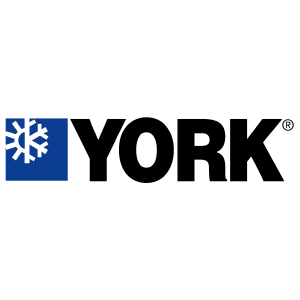No piece of technology is created in a vacuum. Most of the creature comforts we enjoy today have come a long way and have been products of decades and years of development, experimentation, science, and failed prototypes. Refrigerated air provides customers with great convenience and comfort throughout the summer months. It really changed the game when it came to keeping our homes and businesses cool.
So how does refrigeration technology work? And what do you need to know before installing one in your home? Let’s find out!
From Swamp Coolers to Refrigerated Air Cooling Systems
The concept of evaporative cooling goes back hundreds of years. Even Leonardo da Vinci tinkered around with the idea by experimenting with a fan-driven cooling system. Spaniards in the Southwest remedied the heat by hanging a cactus-fiber mesh over clay water jars. Many early societies across the world used the breeze and the cooling power of water to minimize some of the heat carried by the surrounding air.
Evaporative cooling does well in certain weather, where the humidity is not that high. Perhaps it is why in 1936, Phoenix, Arizona was one of the top cities manufacturing evaporative cooling. The state had thousands of evaporative coolers in operation during that time.
Where Does the Name Swamp Cooler Come From?
Evaporative cooling systems are also known as swamp coolers. Perhaps you have wondered where that term of endearment came from? Some accounts say that a well-known contractor pointed out how a neglected or un-serviced cooler would quickly adopt some “swampy” characteristics. That is, bugs and fungus would gather and grow on the wet pad. And the name was born.
Refrigerated Air Innovation and Its Application in Home Units
Refrigerated air, on the other hand, does not use water to cool the air. Instead, it uses refrigerant. This element makes it much more effective for cooling, especially when there is humidity in the air outside. Broken down to its essentials, the process works as a two-way system.
- One way focuses on the inside of the home: The warm air indoors blows through and passes across a cold cooling coil full of refrigerant.
- The other focuses on the outside of the home: The outdoor unit uses a compressor. The refrigerant gas is compressed as it enters a large coil on the outside of the system. The refrigerant is converted back to a liquid and heat is released outside.
4 Things You Need to Know About Installing Refrigerated Air
So now that you know the basic difference between these two systems, let’s dive into why you might choose one over the other.
#1 It’s a centrally controlled system
If you have a swamp cooler installed in your home, it may be difficult for it to cool the home evenly throughout. There might be areas that feel cooler than others. A refrigerated air cooling system is centrally located via the thermostat. The thermostat is mounted in a central location of the home. This small compartment will monitor the temperature and control the system’s operation. As the thermostat senses the temperature needs to be lowered, it sends signals for the inside and outside components to kick in.
#2 Offers much more efficiency than swamp coolers
One of the biggest differences that customers feel between the two is the efficiency of operation. The thermostat makes controlling temperature more convenient, so there is no need to manually turn the system on and off.
#3 The duct system is a central aspect of refrigerated air.
When switching from a swamp cooler to a refrigerated air system, there might be additional ductwork needed. That’s because the ductwork is not only the distribution system, but it also plays an essential role in how the system works by pushing in cold air and sucking in the warm air.
#4 Many Refrigerated air systems use UV light to clean the air
Some systems install UV lights to kill bacteria in the air and prevent them from circulating through the air. This technology is pretty exciting actually! The UV lights can kill bacteria that accumulate and give your air conditioner an extra layer of purification. This makes the air cleaner and fresher and keeps the inside of the HVAC system clean.
Keep Your Refrigerated Air System Running With Professional Maintenance and Servicing
Keeping your HVAC system running efficiently and smoothly is the best way to avoid big expenditures or outages in the middle of summer. If you think you are due for some maintenance or repairs, call Custom Cooling.
For your cooling needs, Custom Cooling is ready to answer the call! Connect with us today.



